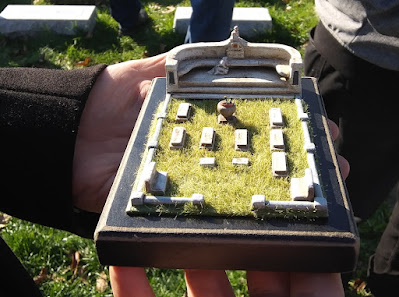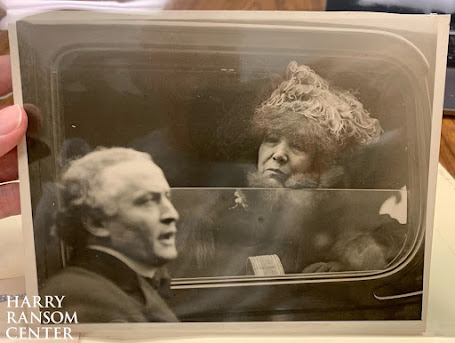Here's a tasty piece of untold magic history to chew on this holiday. In 1920 Houdini tried to sell his most famous escape, The Chinese Water Torture Cell, to magician Nevil Maskelyne. I uncovered the correspondence between the parties during my trip to the
Harry Ransom Center last summer. Here's the story.
In January 1920 Houdini arrived in the UK for a five month tour. Having just completed two films in Hollywood, Houdini was convinced that his future lay in the movies. He was only making this tour to honor bookings made before the war and avoid a hefty fine. For the first time in years he revived his standard vaudeville act; Needles, straitjacket, challenges, and, of course, The Chinese Water Torture Cell.
Getting the Torture Cell back into action took some effort. Houdini recorded in his diary that he "nearly cracked my neck" in a test run of the escape. During the second week of the tour the glass cracked. Then in Liverpool, Houdini seriously injured his right ankle performing the escape. These struggles may have something to do with what happened next.
On February 6 Houdini sat down with magician and inventor
Fred Culpitt (right) at the North Western Hotel in Liverpool. There they discussed the possibility of selling the Water Torture Cell to Nevil Maskelyne, who was performing his "Maskelyne's Mysteries" at St. Georges Hall in London at this time. Houdini gave Culpitt the go-ahead to approach the magician on his behalf.
Culpitt wrote to Maskelyne on February 10th, presenting the idea of a sale and laying out the specifics. Unfortunately, that letter in not in the Ransom Center file, so it's unclear if the idea was for Maskelyne to take possession of the cell immediately or at the end of Houdini's tour.
"It certainly seems as though they are interested in the proposition," Culpitt wrote to Houdini three days later. But there was one hiccup. Maskelyne's representative, George Facer, told Culpitt that Will Goldstone had offered the same effect to Maskelyne that very same week. "Of course, it does not matter to me who gets the illusion 'placed'," wrote Culpitt, "but I think it would be wise for me to know my position."
Houdini quickly wrote back clarifying that Goldston offered Maskelyne "some sort of mermaid illusion", not the Water Torture Cell. He also told Culpitt that he had attended Maskelyne's show at St. Georges Hall and Maskelyne had asked to see the escape. Houdini sent the magician two tickets to his show at the Empire Palace in Stratford. "If anything transpires, I will let you know," he assured Culpitt.
It appears nothing did transpire and that's the end of the correspondence. Houdini kept his Water Torture Cell and performed it for the remainder of his career.
It's hard to know how serious Houdini was about selling the Torture Cell. Perhaps his initial frustrations with the apparatus caused him to overreact. However, he reportedly did destroy magic apparatus that he had stored in the UK at the end of the tour and the cell was likely expensive to ship. So if Houdini really did believe he had no more use for the escape then it would make sense for him to offload it in the UK.
There's also another possibility, but this is pure speculation. Is it possible what Houdini was looking to sell was a second Water Torture Cell, perhaps the cell he had made for "Miss Trixy" in 1912? It's likely that cell would have been stored in England.
As for Maskelyne, the magician was 56 and not an escape artist, so it seems unlikely he would perform the escape himself. What he would have done with it is anyones guess. So this episode offers a fascinating "what if" of magic history.
Want more? You can read the original Houdini/Culpitt correspondence as a "Scholar" member of my
Patreon.
Happy Thanksgiving!





















































